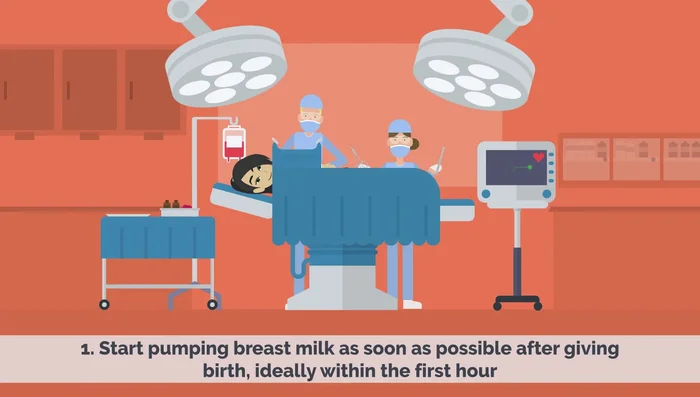Breast milk is nature's perfect food, offering unparalleled nutrition and immunity benefits for your baby. For working mothers, or those simply wishing to build a reserve, expressing and storing breast milk is a crucial skill. Knowing how to safely pump, store, and feed your precious liquid gold ensures your baby receives the best possible start in life, minimizing the risk of contamination and maximizing the nutritional value. Understanding the intricacies of safe milk handling can feel overwhelming, but it doesn’t have to be.
This comprehensive guide provides a step-by-step process for every stage of breast milk management, from the initial pumping session to the final feeding. We'll cover everything from selecting appropriate equipment and practicing proper hygiene to understanding the best storage methods and thawing techniques to ensure your baby’s safety and well-being. Get ready to learn everything you need to know to confidently store and feed your expressed breast milk.
Preparation and Safety Guidelines
- Breast pump
- Clean containers (bottles or storage bags)
- Warm compress (optional)
- Refrigerator
- Freezer
- Bottle warmer
- Never refreeze thawed breast milk. Once thawed, use within 24 hours and discard any leftover milk.
- Always wash your hands thoroughly before pumping, handling breast milk, or preparing bottles.
- Inspect breast milk for any unusual color, smell, or texture before feeding. Discard any milk that appears off.
Step-by-Step Instructions
Pumping Breast Milk
- Start pumping as soon as possible after birth, ideally within the first hour.
- Wash your hands and ensure the pump is clean and sterilized.
- Choose a comfortable place to sit and relax. Consider placing a warm compress on your breast to encourage letdown.
- Begin pumping, alternating breasts every 10 to 15 minutes until your milk flow slows down.



Pumping Breast Milk - Store your milk in a clean, sterilized container.

Pumping Breast Milk Storing Breast Milk
- Label each container with the date and time of expression.
- Store freshly expressed milk in the refrigerator for up to four days. For longer storage, freeze the milk (up to six months in a standard freezer, up to 12 months in a deep freezer).
- Use breast milk storage bags or clean, food-grade containers with tight-fitting lids. Avoid disposable bottle liners or plastic bags.
- Leave about an inch of space at the top of the container as breast milk expands as it freezes.




Storing Breast Milk - Store breast milk at the back of the fridge or freezer where the temperature is the coldest and most consistent.

Storing Breast Milk Thawing and Feeding Breast Milk
- Thaw frozen breast milk in the refrigerator overnight or under warm running water. Do not thaw in the microwave.
- Gently swirl the container to mix the separated layers of fat and milk before feeding. Do not shake.
- Warm the milk by placing the container in a bowl of warm water or using a bottle warmer. Do not microwave.
- Use a clean, sterilized bottle and nipple. Avoid reusing disposable bottle liners and discard any leftover milk after feeding.



Thawing and Feeding Breast Milk
Read more: Ultimate Dr. Brown's Bottle Organization System: Faster & Easier Bottle Prep!
Tips
- Always wash your hands and sterilize all equipment before pumping and storing breast milk.
- Consult with a lactation consultant or your health care provider if you have any questions or concerns.












